Links to recordings from this day of the user meeting are at the bottom of this post.
The third day of presentations kicked off with Brian Becker running us through the gauntlet of setting up and deploying web services. Initial setup with Jarvis and Docker containers seems like an absolute breeze. However, the later stages configuring cloud services can be more fiddly.
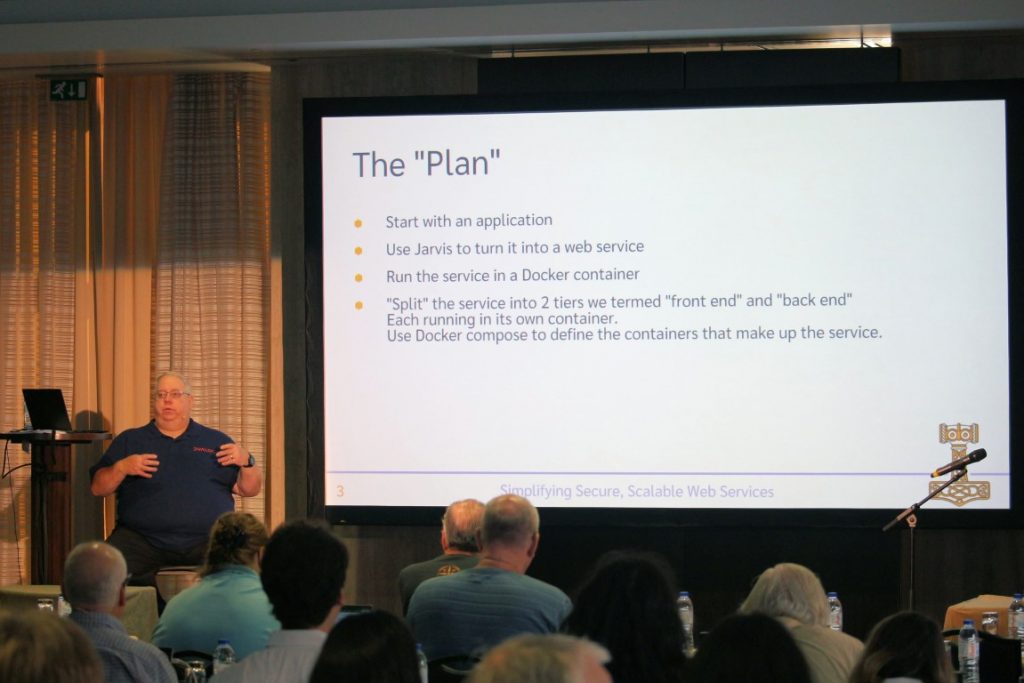
Brian Becker talks about creating and deploying web services.
Stephen Mansour of Misericordia University then gave us the hot tips for producing hot tubs. His new system TAMPA (Taming Mathematical Programming in APL) can be used to optimise some decision (e.g. how many hot tubs to produce) for some objective function (e.g. maximise profit) according to some constraints (e.g. resources available). The use of APL in TAMPA makes a near 1-to-1 translation of linear programming expressions into executable code.
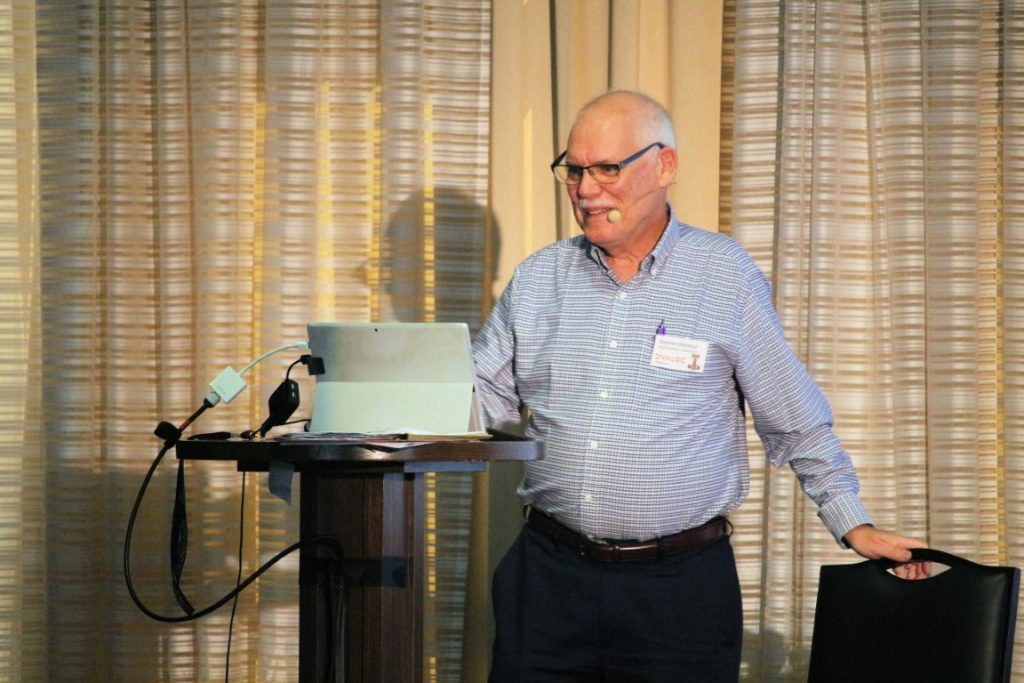
Stephen Mansour explains the TAMPA mathematical programming framework.
We then got to hear some strong but convincing opinions about graphical user interfaces from Norbert Jurkiewicz, who told us about how The Carlisle Group has been incrementally integrating the HTMLRenderer and “the triad” of HTML, CSS and JavaScript into their systems. He championed the benefit of hiring external developers, in addition to the portability of using web-technologies, for graphical front ends.
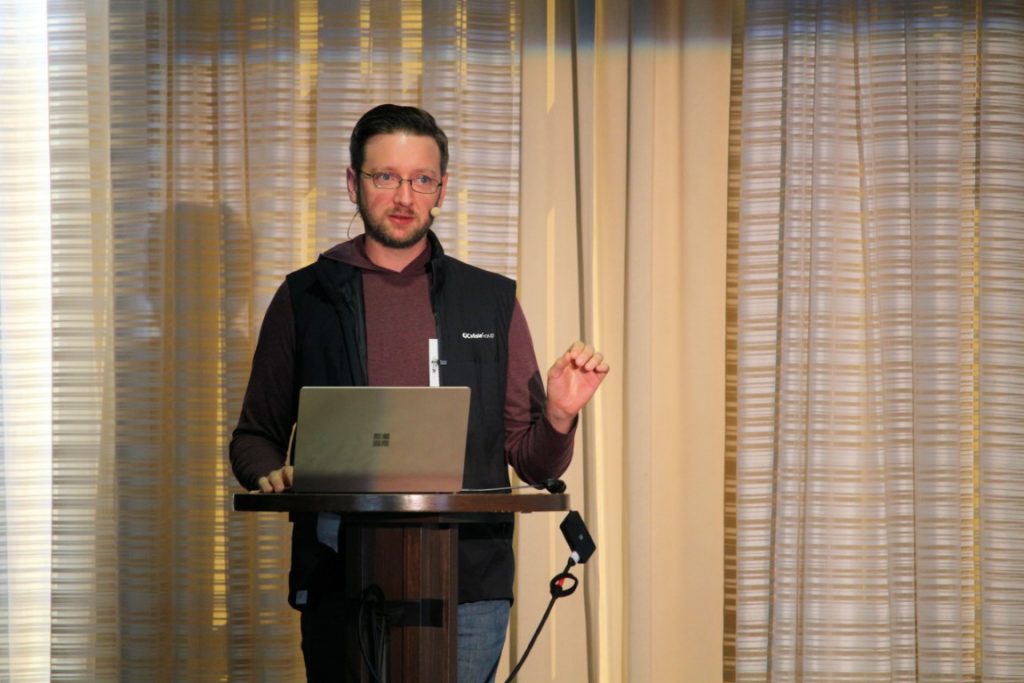
Norbert Jurkiewicz gives his views on using the web stack for front end development.
Neither Gitte Christensen nor Brian Becker are shy about saying that some of their favourite parts of every user meeting are the competition presentations. Luckily for us, both this year’s student winner and professional winner came to share their experiences about participating.
Professional winner Michael Higginson had actually been a kdb+ and q programmer for many years before recently deciding to expand his horizons with APL. He gave a fantastic breakdown of his thought process in solving both an easier problem which he found built his confidence, and then the notorious problem 6 on interpreting human-readable dates and times.
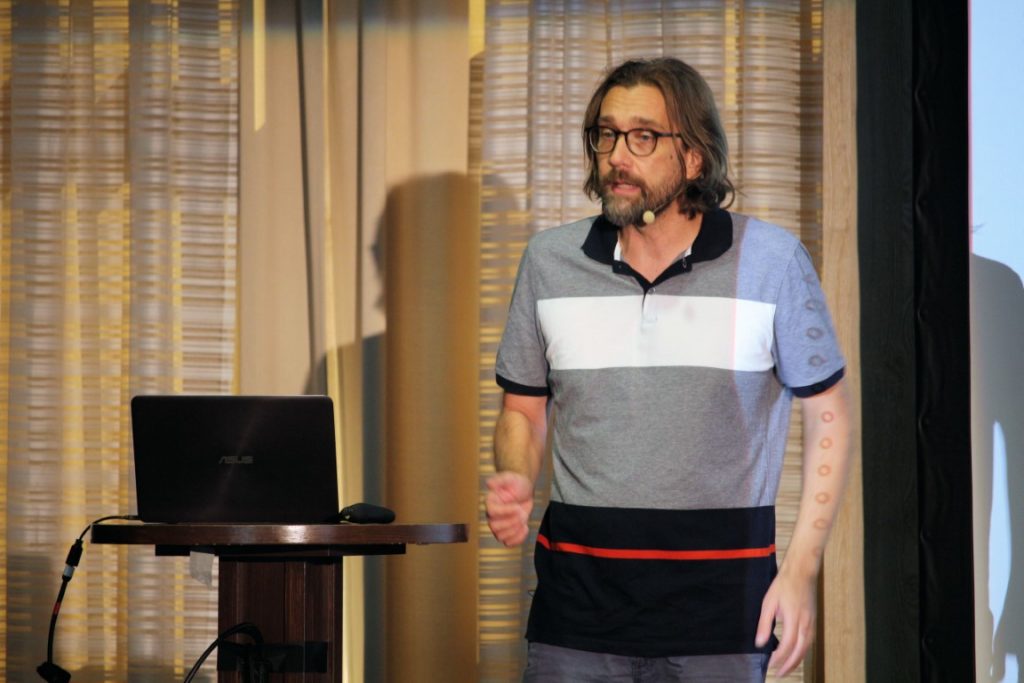
Michael Higginson takes us through his array programming journey.
The audience could definitely empathise with all of the reasons given by student winner Tzu-Ching Lee as to why he likes APL: the glyphs; the concise syntax; operators; and algorithms as primitives. Alongside his excellent walkthroughs of two of his solutions, he had brilliant ideas for extending the problem description for the Base85 encoding/decoding problem once he noticed additional symmetry which could be expressed in his solutions.
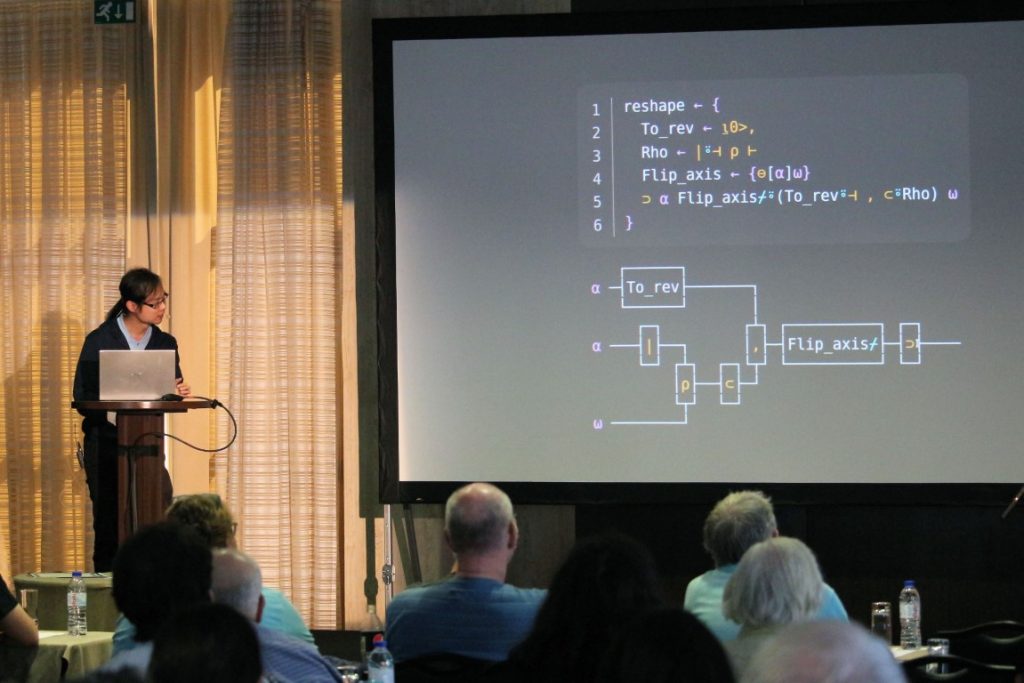
Student winner Tzu-Ching Lee presents his winning solutions to the APL Problem Solving Competition.
In the afternoon, we took a coach about an hour away to the Quinta dos Vales vineyards and winery. We were treated to a tour of the winery, learning about the fermentation process; what goes into deciding whether to make single grape or blended wines; and the use of wooden barrels to imbibe additional flavour. Afterwards, we were split into teams and challenged to make our best and favourite blends of wines from three grapes. According to the judges, a majority Cabernet Sauvignon, with about a third Aragonês and just ten percent Touriga Nacional makes for the most delicious blend of tannins and spices. Later that evening, we enjoyed a delicious Portuguese churrasco – or barbeque.
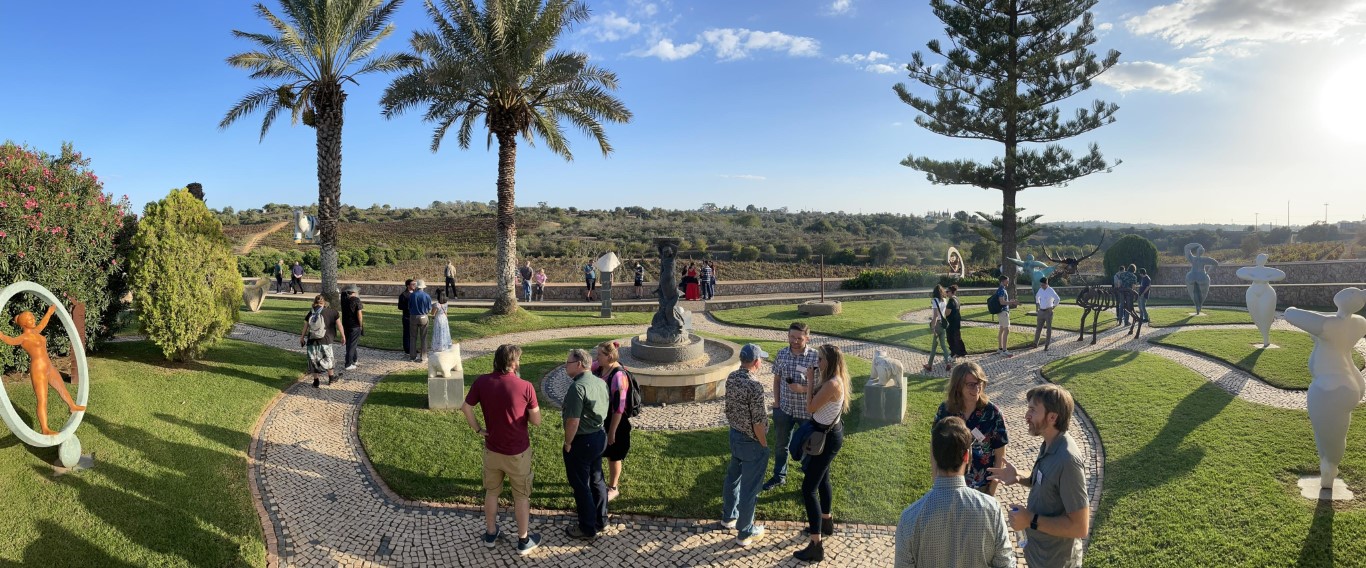
Delegates enjoy the afternoon sun at Quinta dos Vales winery in the Algarve, Portugal.
Congratulations to the winners of the APL Problem Solving Competition, and congratulations also to the winners of the wine blending competition!
Today’s presentations (links to recordings will be added as they become available):
- D12: Simplifying Secure, Scalable Web Services – Brian Becker
- U12: TAMPA – Taming Mathematical Programming in APL – Stephen Mansour
- U13: Integrating HTMLRenderer Into Existing Applications – Norbert Jurkiewicz
- The APL Problem Solving Competition – Introduction and Prize Ceremony – Brian Becker
- How I Won the APL Problem Solving Competition (Professional Entrant) – Michael Higginson
- How I Won the APL Problem Solving Competition – Tzu-Ching Lee


 Follow
Follow